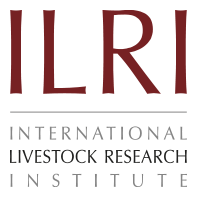Winam
Origin and distribution: This breed or strain of the Small East African Zebu is also known as Kavirondo Zebu. The Winam are believed to have descended from the zebu brought into Kenya by the Nilo-Hamitic tribes that migrated during the 17th century into Kenya from the north and settled in western Kenya, south of Lake Turkana. Continual cattle raids resulted in admixtures of original breed characteristics (Rege and Tawah 1999). It is found in Nyanza and Western Provinces of western Kenya, particularly in the lowlands of the Lake Victoria Basin, an area inhabited by the Luo and Luhya ethnic groups. Results of phylogenetic analysis reported by Rege et al. (2001) indicated that they have the same ancestral stock with Kenya Boran, Orma Boran, Ethiopian Boran and Highland Zebu of Kenya, and they associated the genetic closeness of Winam to the Boran breed due to significantly high mean frequency of taurine alleles that are also shared by the Borans [CS by Okomo].
Physical characteristics: There is a wide variation in their coat colour; however, the most frequent coat colours are black, white or black-and-white. There are also variations in size of the horns and hump. Wither height is in the range of 95-132 cm in mature males and 94-125 cm in mature females (Rege 1999). Mature body weight ranges from 215 to 419 kg for males and from 200 to 365 kg for females (Epstein 1971; Maule 1990; Okeyo et al. 1996; Rege 1999).
Peculiarity: They are adapted to the dry areas of Lake Victoria Basin.
Breed status: Population estimate for 1990 indicated 2 110 050 heads of cattle with 949 523 breeding females (DAD-IS 2005). The population is decreasing, perhaps due to shortage of water during dry season, but the breed or strain is not at risk.
Utility: They are kept for milk, draft power and meat. No data is available on their performance (Mosi et al. 1996)
References
DAD-IS, 2005: http://dad.fao.org/en/home.htm
Epstein H. 1971. The origin of the domestic animals of Africa Volume I. Africana Publishing Corporation. New York. London. Munich. pp. 378-380.
Maule J.P. 1990. The cattle of the tropics. Centre for Tropical Veterinary Medicine, University of Edinburgh, Great Britain. 225 pp.
Mosi R.O., Okeyo A.M., Ahuya C.O. and Okomo M.A. l996. Herds structure and uses the Small East Africa Zebu cattle in the Lake Victoria basin and Coastal Lowlands of Kenya. In: Proc. of 4th Annual KARI Scientific Conference, 14th-16th Oct. 1996 KARI Headquarters, Nairobi. Kenya, pp.270-279.
Okeyo A.M., Mosi R.O., Ahuya C.O. and Okomo M.A. 1996. Characterization of the Zebu cattle of Kenya. Physical and morphological characteristics. In: Proc. of 4th Annual KARI Scientific Conference, 14th-16th Oct. 1996 KARI Headquarters, Nairobi. Kenya, pp.252-269.
Rege J.E.O., Kahi A.K., Okomo-Adhiambo M., Mwacharo J. and Hanotte O. 2001. Zebu cattle of Kenya: Uses, performance, farmer preferences, measures of genetic diversity and options for improved use. Monograph No.1. ILRI (International Livestock Research Institute), Nairobi, Kenya. 87 pp.
Rege J.E.O. 1999. The state of African cattle genetic resources I. Classification framework and identification of threatened and extinct breeds.FAO/UNEP Animal Genetic Resources Information Bulletin 25:1-25.
Rege J.E.O. and Tawah C.L. 1999. The state of African cattle genetic resources II. Geographical distributions, characteristics and uses of present-day breeds and strains. FAO/UNEP Animal Genetic Resources Information Bulletin 26:1-25.
Related websites






